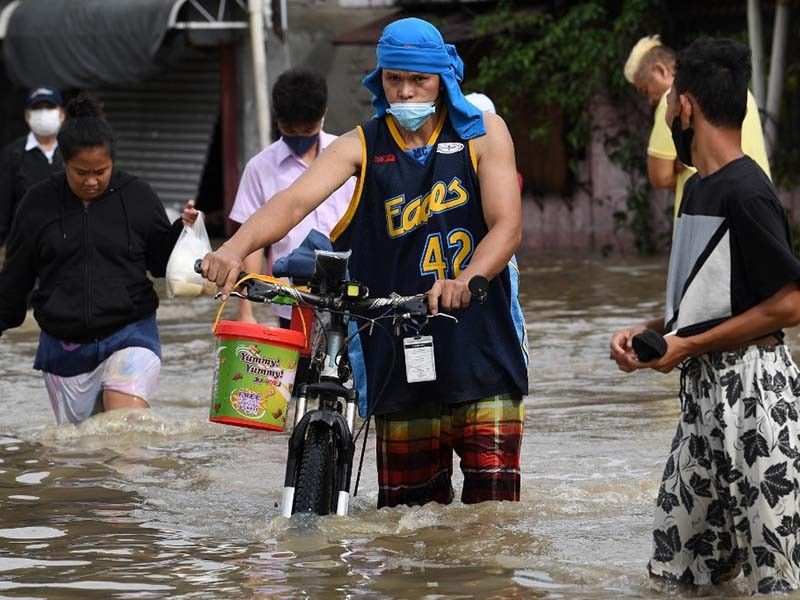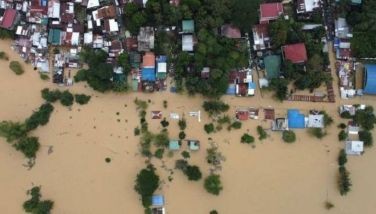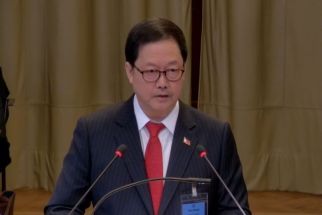Beyond resilience narrative, 'whole of government' planning needed vs disaster risks

MANILA, Philippines — Local disaster risk reduction and management officials from Metro Manila called for a "whole of government" approach to addressing climate change in the wake of Severe Tropical Storm Paeng, one of the worst natural calamities to hit the Philippines this year.
According to the latest situation report from the National Disaster Risk Reduction and Management Council, Paeng's death toll now stands at 138, while over 4.6 million Filipinos were listed as being "affected" by the typhoon.
At the Adapt Asia 2022 forum on Thursday morning, disaster risk reduction advocates said that Paeng was proof that the narrative of "Filipino resilience" can hinder attempts to improve the country's disaster preparedness.
"This forum is not about policymaking...this forum is about the real situation out there," Felix Ayque of Komunidad Global Pte Ltd. said in his opening remarks.
A worsening situation
Day 1 of the forum on Thursday saw local government officials sharing stories of pushing risk resilience in their localities.
Makati Mayor Abby Binay said that the city government was projecting more extreme heat in the coming years.
"Extreme heat and rainfall events have been observed in our city for the last 30 years," she said in a taped message.
Peachy de Leon of the Quezon City Disaster Risk Reduction and Management Office said that disasters have become more and more complex in the face of a changing climate. Quezon City, the country's largest local government, is home to over 3 million residents.
"Quezon City requires a shift in its strategy that is more mindful of the essentials of DRR," de Leon said. "The last thing we should to is blindly romanticize Filipino resiliency without building a safe and more livable community."
"What was once merely called climate change now accounts for stronger typhoons and a concerning rise in the sea level close to Manila," she said.
READ: Delivery of climate cash, rapid emission cuts could make or break COP27 — Filipino campaigners
Best practices
Mayor Binay said one of Makati's best practices was to intensify the city's implementation of climate-adjacent ordinances like the anti-smoking ordinances and those concerning the cleanup of waterways.
In response to the latest findings from city hall's research office, Binay said LGU is looking to upgrade its infrastructure and put up an early warning system in hard to reach areas of the city.
To date, the city has 20 automated weather sensors to issue warnings of impending weather warnings and, outside of natural disasters, serve as air quality and weather monitoring mechanisms.
Manila DRRMO director Arnel Angeles said city hall has already crafted its Climate Change Adaptation Plan after noting rising temperatures over the past year.
However, he said that the newly-elected city government was looking to scale this down to better suit the requirements of constituents across 897 barangays in the capital city — the most out of any local government in the country.
Angeles said that Manila Mayor Honey Lacuna is also trying to strengthen the city's cleanup drives along Manila Bay as well as upgrade its modernized materials recovery facility. The latter, he said, allows the LGU to repurpose materials into new items like shopping bags and construction materials like hollow blocks
'Bayanihan'
Manuel Rangasa, executive director of Local Climate Change Adaptation for Development, called for a "whole of government approach" in the sharing of knowledge and best practices to bolster the disaster risk reduction efforts of far-flung areas in the Philippines.
Liza Velle Ramos, head of research and planning at Makati City who represented Binay at the forum said that the health departments of cities around Pasig River coordinate with each other in tracking the movement of mosquitos to predict patterns in the weather and the volume of dengue cases in an area.
Ramos added that partnership-building is always the city government's primary thrust when building climate and disaster resilience, saying the city often tries to secure funding and institutional commitments through active partnership building with nongovernment organizations.
"There are a lot of developments and opportunities right now for climate and dissaster risk financing...it's a matter of knowing the market and their requirements and tapping them for technical assistance," she said.
More than funding, sharing data on a granular level among local government units was also a common theme in the roundtable discussion among local government officials at the forum.
De Leon from the QCDRRMO emphasized the need for correct and timely information, which could easily become a life or death mechanism for citizens and frontliners alike.
In pushing for integrated urban systems among barangays, De Leon presented the interface of iRise Up, a system of QCDRRMO in which consolidates and integrates DRRM information from various sources, processing and translating data for concrete and effective actions to reduce disaster risk.
As a result of the system's launch, De Leon claimed that 100 percent of high risk communities that are classified as being prone to flooding are warned ahead of time before the landfall of natural disasters.
"Maps are no longer understood by specialists alone; they are made more useful by planners and decision-makers," she said.
The same system also enabled the city to identify cold and hot zones in terms of coronavirus cases, which assisted the city's monitoring of the disease and eventual policy-making to address the pandemic.
It also allowed the early detection and automatic alerts, which in turn prompt the delivery of services to affected areas.
Transportation
Kelly Bird, country director for the Asian Development Bank, said that the ADB is financing the North-South Commuter Railways and the MRT-4.
He said that sustainable transportation is among the top priorities in the ADB's approach to addressing the climate crisis.
Manila DRRMO's Angeles said the capital city was also pushing for more use of electric vehicles to modernize public transportation and minimize greenhouse gas.
Binay also urged residents of the city to consider buying local produce, recycling, and using public and active transportation instead of driving private vehicles to reduce the city's carbon footprint.
She said that the Makati Bus System was also projected to improve the city's air quality while also reducing power and fossil fuel consumption.
- Latest






























